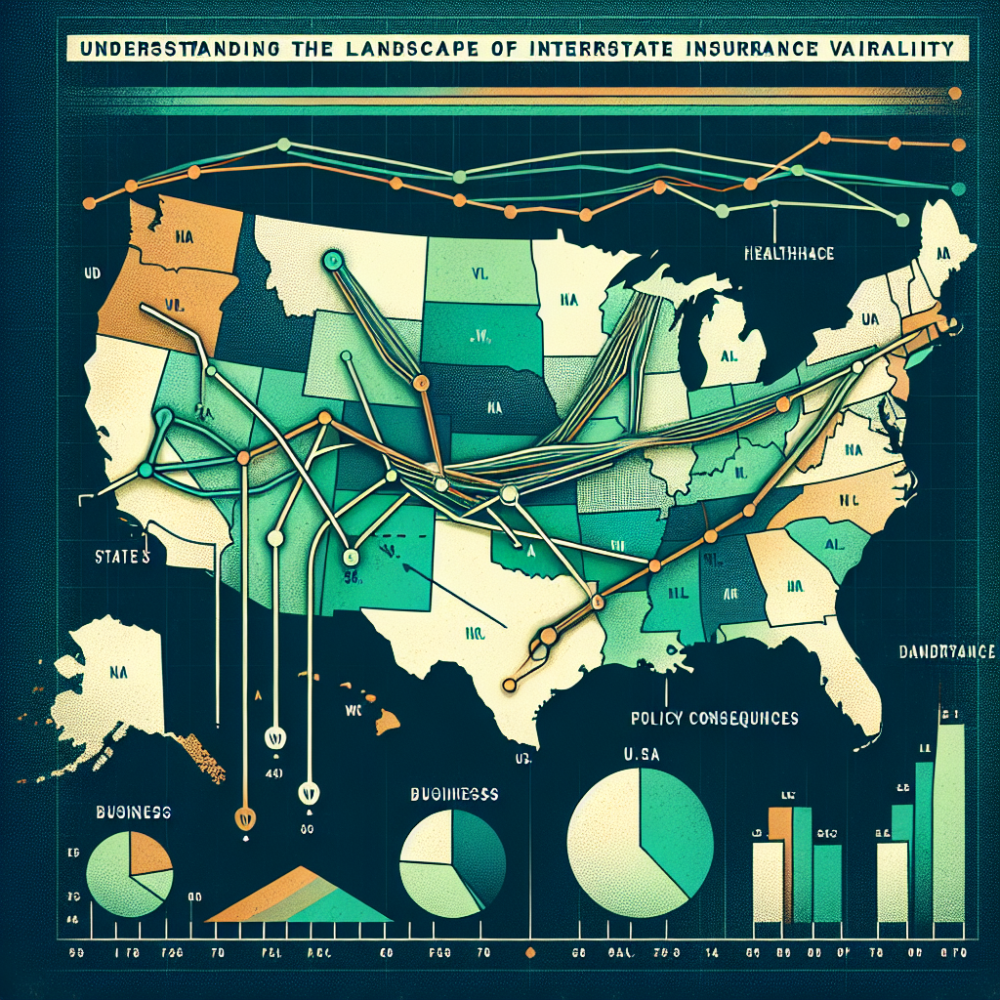Understanding the Landscape of Interstate Insurance Variability: Policy Consequences

Posted on: Saturday, March 2nd, 2024
Navigating the complexities of insurance policies across state lines in the United States reveals notable differences that have far-reaching implications. These variations arise from distinct state regulations, which influence coverage options, premium rates, and the handling of claims. Understanding these differences is crucial for policyholders relocating or holding properties in multiple states, ensuring they remain adequately protected under varying legal frameworks. This guide will explore the top ten policy implications of cross-state insurance differences, providing a clearer understanding for consumers and professionals alike.
The first major policy implication involves the variation in minimum coverage requirements by state, leading to significant discrepancies in basic insurance protection. States dictate their own minimums for types of coverage such as auto, health, and home insurance, which means that what is considered adequate in one state may be insufficient in another. This presents challenges for individuals moving between states or businesses operating across state lines, necessitating adjustments to policies to meet different legal requirements.
Second, the disparity in insurance premium costs across states significantly impacts consumers. Factors like state regulations, risk levels, and market competition contribute to this variability. For instance, states prone to natural disasters may see higher property insurance premiums, while others with more stringent health insurance mandates might exhibit higher health insurance costs. Such differences demand a more strategic approach to financial planning and risk management.
Third, regulatory approaches to consumer protection diverge significantly among states, affecting policyholder rights and insurance company obligations. Some states adopt a more consumer-friendly stance, offering greater protections against insurance company abuses, while others may favor a hands-off regulatory approach. This variability can influence claim handling processes, consumer satisfaction, and the overall ease of navigating insurance disputes.
Fourth, the availability of certain insurance products, such as specific types of liability or supplemental coverage, can vary widely due to state-specific regulations and market preferences. Consequently, individuals and businesses may find it challenging to obtain consistent coverage across different jurisdictions, potentially leaving gaps in their risk management strategies.
Fifth, states differ in their adoption and implementation of the Affordable Care Act (ACA), particularly in the establishment of state vs. federal marketplaces and Medicaid expansion. These differences affect the availability, costs, and benefits of health insurance options for residents, underscoring the need for careful consideration when moving or planning healthcare coverage across state lines.
Sixth, the approach to and extent of insurance fraud regulation and enforcement can vary, impacting premium rates and the overall market health. States with more aggressive anti-fraud measures may see lower costs and more stable insurance environments, benefiting policyholders indirectly through more competitive premiums and better service quality.
Seventh, differences in tort law and litigation practices across states influence liability insurance policies significantly. In states with higher litigation rates or more favorable plaintiff rulings, individuals and businesses may require higher liability coverage limits, affecting both policy costs and structure.
Eighth, state-specific car insurance laws, such as no-fault vs. tort systems, directly impact the policy features, fault determination in accidents, and overall claim handling processes. Understanding these differences is crucial for drivers who frequently travel or relocate across state lines.
Ninth, the approach to workers' compensation insurance, including coverage requirements, benefit levels, and eligibility criteria, differs by state. These differences necessitate that employers operating in multiple states stay abreast of varying regulations to ensure compliance and adequate employee protection.
Tenth, the licensing and regulatory oversight of insurance providers and agents vary, impacting the ease of doing business and the level of scrutiny placed on insurance practices. States with more stringent requirements may offer a higher level of consumer protection, albeit potentially at the cost of higher premiums or reduced flexibility in policy offerings.
In conclusion, the landscape of cross-state insurance differences presents a complex matrix of policy implications for individuals, businesses, and policymakers. Awareness and understanding of these implications are key to navigating the intricacies of the insurance market effectively, ensuring both compliance and optimal protection across state lines.